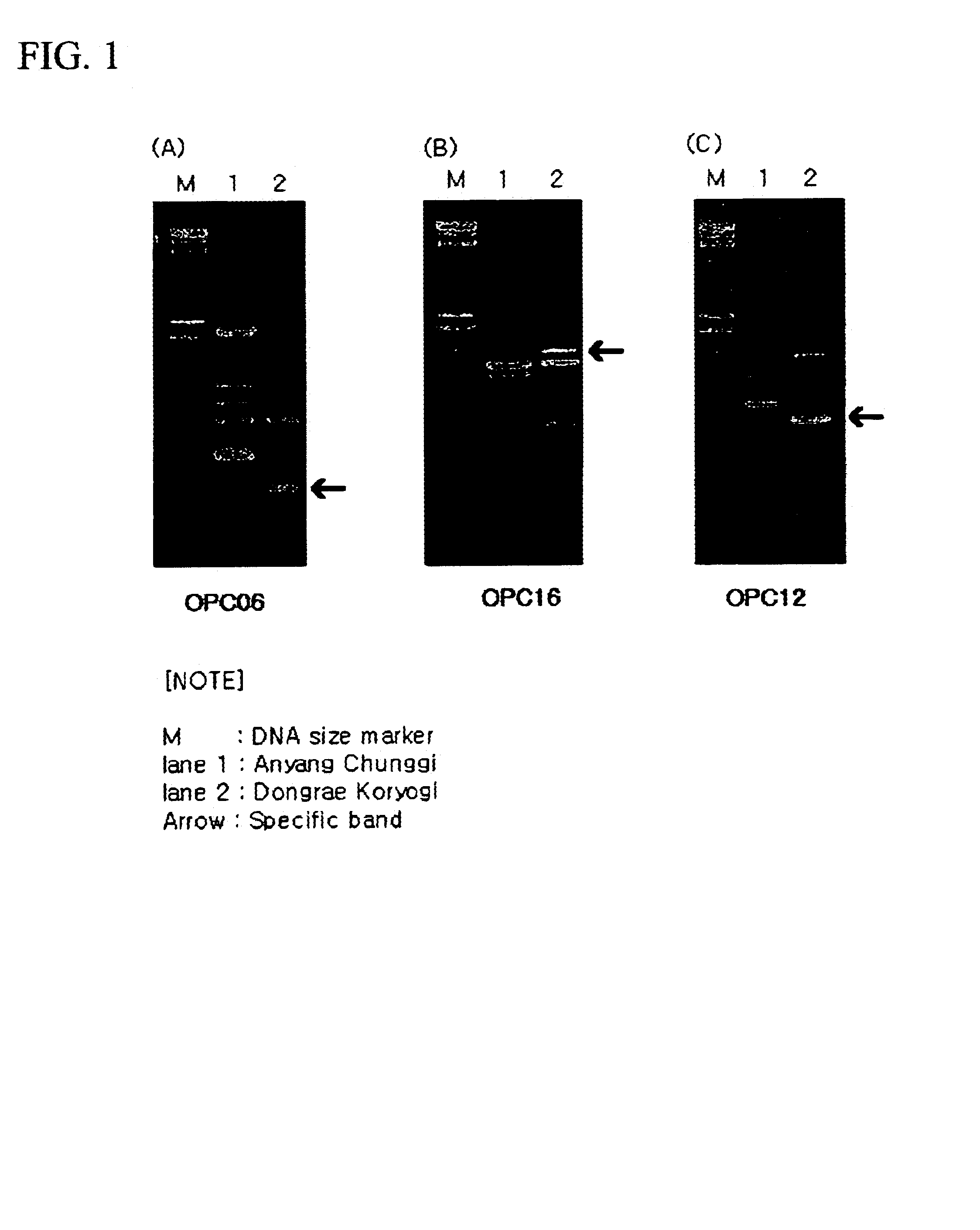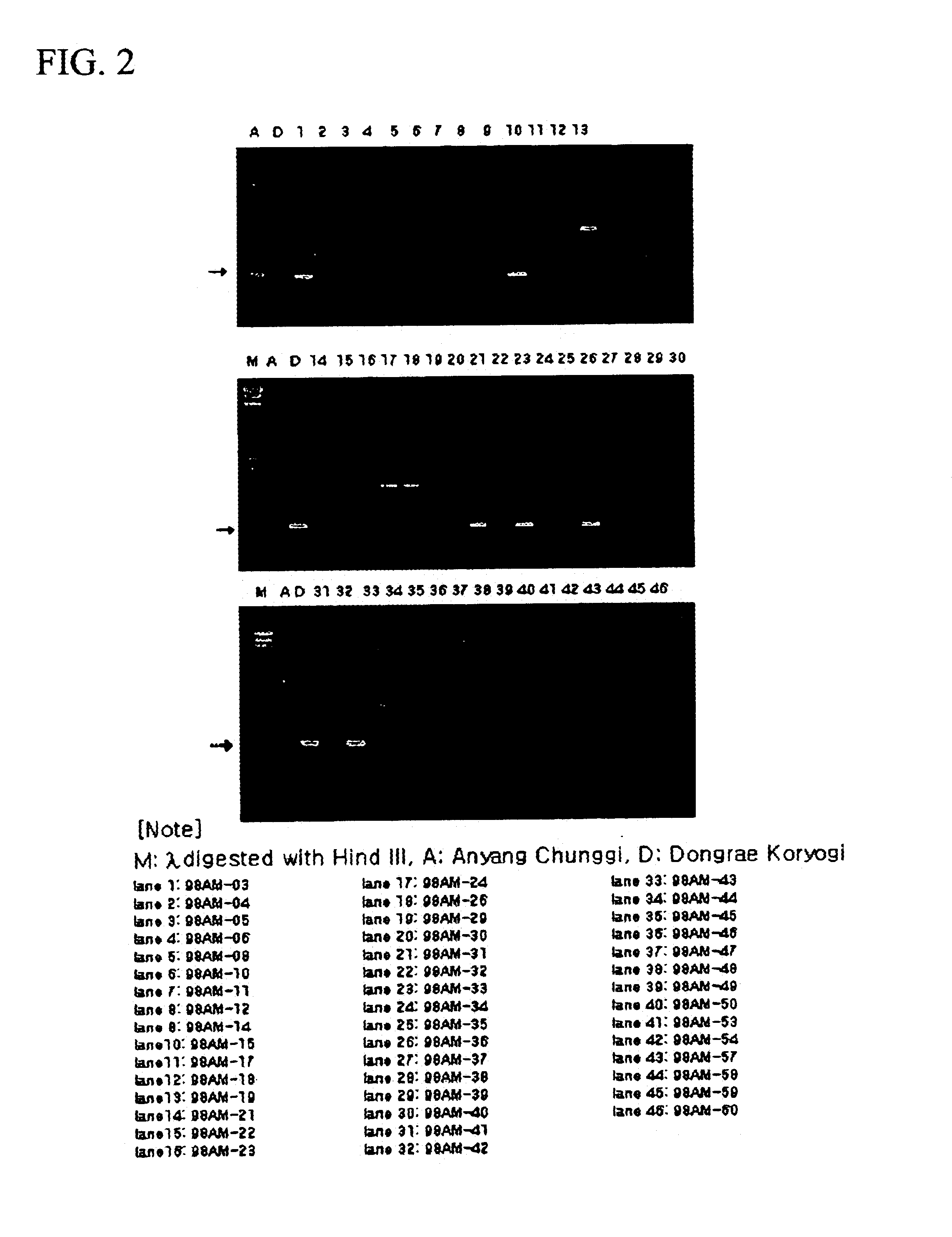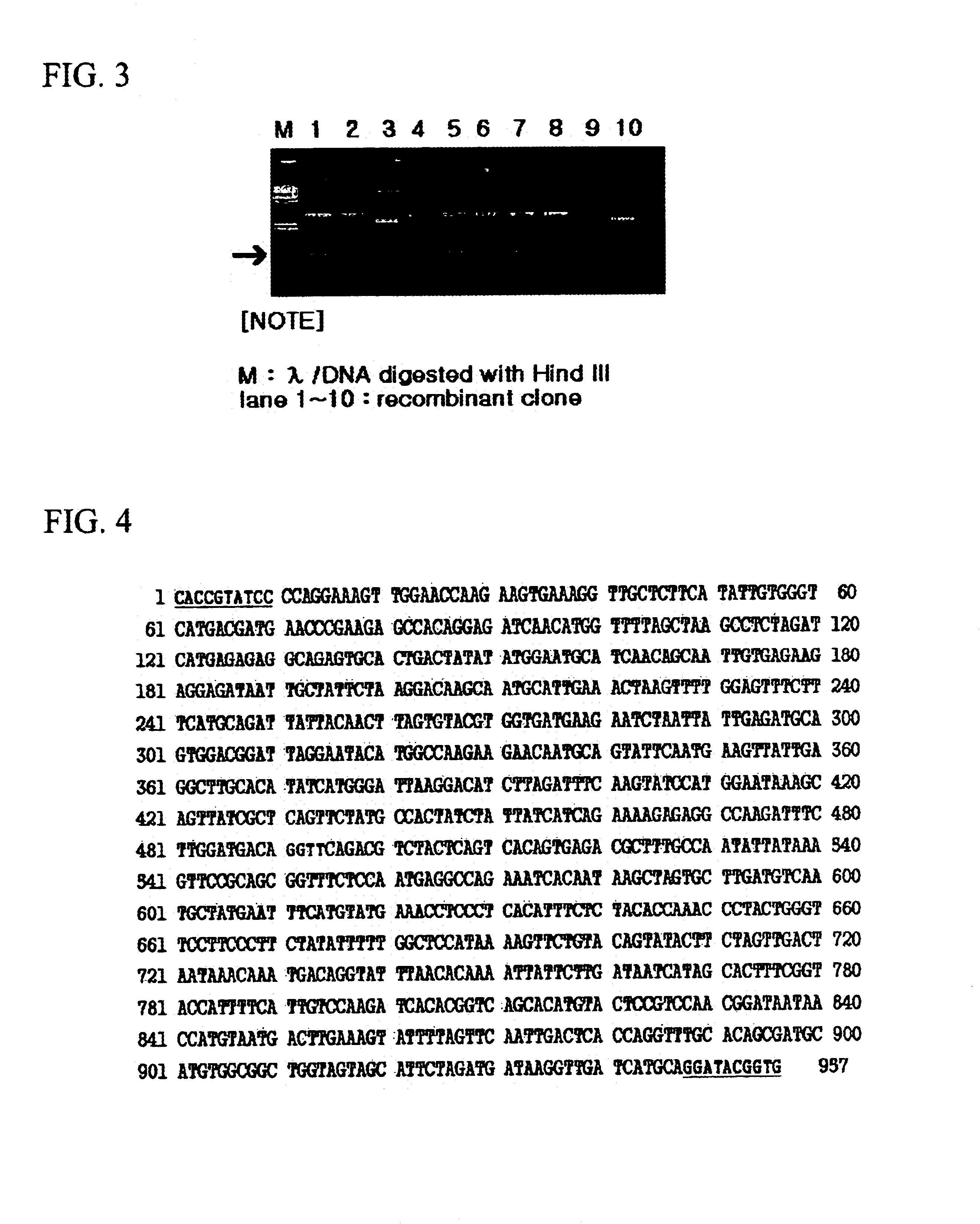Grass cultivar named ‘Benest 1’ and ‘Dongrae Koryogi’-specific STS marker
a grass cultivar and a technology of zoysia grass, applied in the field of grass cultivars named ‘benest 1’ and ‘specific sts markers of dongrae koryogi, can solve the problems of no systematic selection and breeding of zoysia grass cultivars, no systematic selection and breeding of cultivars of zoysia grass, and relatively slow propagation
- Summary
- Abstract
- Description
- Claims
- Application Information
AI Technical Summary
Benefits of technology
Problems solved by technology
Method used
Image
Examples
example 1
Production of a New Grass Cultivar by Mating ‘Anyang Chunggi’ and ‘Dongrae Koryogi’ Zoysia Grasses
[0031]‘Anyang Chunggi’ was used as a mother plant, and ‘Dongrae Koryogi’ as a pollen parent.
Step 1:Preparation of Zoysia Grasses for Mating
[0032]Two sods of zoysia grasses, ‘Anyang Chunggi’ and ‘Dongrae Koryogi’, were prepared by cutting work using a hole cutter of 11.5 cm in diameter, and planted in plastic pots with an inner diameter of 16.5 cm. ‘Anyang Chunggi’ was planted at the end of February 1998, and ‘Dongrae Koryogi’ in November 1997, and the two planted zoysia grasses were then maintained in a greenhouse of 5° C. for the winter season. In order that the two grass cultivars come into flower at the same time, ‘Dongrae Koryogi’, of which formation of flower stalk is more rapid than that of ‘Anyang Chunggi’, was maintained in the greenhouse for the period from March to April after being grown at the outside of the greenhouse for a certain period.
Step 2:Mating of ‘Anyang Chunggi’ a...
example 2
Selection of ‘Dongrae Koryogi’-Specific RAPD Primer Marker
[0041]With an aim of detecting whether the surviving 46 individuals prepared in Example 1, expected to be hybrids of ‘Anyang Chunggi’ and ‘Dongrae Koryogi’, were hybrids or not, a ‘Dongrae Koryogi’-specific RAPD primer, which will be used as a marker, was primarily selected.
[0042]Because ‘Dongrae Koryogi’ zoysia grass was used as a pollen parent, once hybrids are established, the resulting hybrids have ‘Dongrae Koryogi’-specific markers. Accordingly, in order to investigate whether mating occurred or not, markers specifically amplified in ‘Dongrae Koryogi’ should be selected. A ‘Dongrae Koryogi’-specific marker was picked according to the below procedure.
Step 1:Selection of ‘Dongrae Koryogi’-Specific Marker
[0043]To select ‘Dongrae Koryogi’-specific markers, randomly amplified polymorphic DNA (RAPD) analysis was performed using 40 operon primers including OPC06, which are random primers.
[0044]DNA extraction from the two zoysia...
example 3
Determination of Nucleic acid Sequence of ‘Dongrae Koryogi’-Specific Marker and Development of STS Marker
[0050]Since RAPD analysis is typically accomplished by PCR in which an annealing reaction of primers is carried out using short primers with a relatively low Tm value, primers are liable to non-specifically bind to a denatured template, resulting in different PCR products being produced according to reaction conditions. To overcome this problem, in the present invention, through analysis of the nucleic acid sequence of a RAPD marker, there was accomplished the synthesis for a longer primer than the primarily used random primer, allowing for high specificity upon being used in PCR. In the present invention, the longer and highly specific primer called ‘STS (Sequence Tagged Site) marker’. A ‘Dongrae Koryogi’-specific STS marker was prepared according to the following steps.
Step 1:Selection, Cloning and Nucleic Acid Sequence Determination of ‘Dongrae Koryogi’-Specific Marker
[0051]A ...
PUM
| Property | Measurement | Unit |
|---|---|---|
| Temperature | aaaaa | aaaaa |
| Temperature | aaaaa | aaaaa |
| Length | aaaaa | aaaaa |
Abstract
Description
Claims
Application Information
 Login to View More
Login to View More - R&D
- Intellectual Property
- Life Sciences
- Materials
- Tech Scout
- Unparalleled Data Quality
- Higher Quality Content
- 60% Fewer Hallucinations
Browse by: Latest US Patents, China's latest patents, Technical Efficacy Thesaurus, Application Domain, Technology Topic, Popular Technical Reports.
© 2025 PatSnap. All rights reserved.Legal|Privacy policy|Modern Slavery Act Transparency Statement|Sitemap|About US| Contact US: help@patsnap.com



